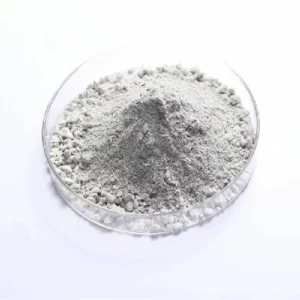Choosing the right gunning castable involves considering several factors to ensure it meets the specific requirements of your application.
Here are some key considerations to help you select the appropriate gunning castable:
- Application Parameters: Understand the specific requirements and conditions of your application. Consider factors such as temperature, thermal cycling, chemical exposure, abrasion, and mechanical stress. This information will guide you in selecting a gunning castable with suitable properties and performance characteristics.
- Material Composition: Different gunning castables are formulated with varying combinations of refractory aggregates, binders, additives, and other components. Evaluate the material composition to ensure it offers the desired properties, such as high-temperature resistance, thermal shock resistance, chemical resistance, and durability.
- Alumina Content: The alumina content of the gunning castable affects its refractoriness and resistance to slag and chemical attack. Higher alumina content generally provides better resistance to high temperatures and aggressive environments. Assess the alumina content based on your application’s needs.
- Particle Size Distribution: The particle size distribution of the gunning castable influences its workability, flowability, and ability to form a cohesive lining. It’s important to consider the particle size distribution to ensure proper application and adherence to the substrate.
- Setting Time and Installation: Evaluate the setting time of the gunning castable, as it affects the installation process. Some applications may require longer or shorter setting times, depending on the complexity and size of the installation. Consider the available installation equipment and techniques for gunning the castable.
- Manufacturer’s Recommendations: Consult with reputable refractory manufacturers or suppliers who can provide guidance based on their expertise and product knowledge. They can recommend specific gunning castables that have been proven successful in similar applications.
- Performance History: Consider the performance history of the gunning castable, especially if it has been used in similar applications or industries. Look for case studies, testimonials, or references that provide insights into the castable’s performance, durability, and overall satisfaction.
- Cost-Efficiency: Balancing performance requirements with an appropriate budget is important. Evaluate the cost-effectiveness of the gunning castable by considering its lifespan, maintenance requirements, and overall performance in relation to its price.
Remember, it is recommended to consult with refractory experts or professionals who can assess your specific application requirements and provide tailored recommendations Gunningcastable based on their experience and knowledge. They can help you select the right gunning castable that meets your needs for optimal performance and longevity.
Can you provide more information on the alumina content and its impact on gunning castable performance?
The alumina content in gunning castables plays a significant role in determining their performance characteristics.
Here’s more information on the impact of alumina content:
- Refractoriness: Alumina is a key component in refractory materials due to its high melting point. A higher alumina content in gunning castables generally results in increased refractoriness, allowing the castable to withstand higher temperatures without significant loss of strength or integrity.
- Thermal Shock Resistance: Alumina-rich gunning castables exhibit improved resistance to thermal shock. They can withstand rapid temperature changes without cracking or spalling, making them suitable for applications where thermal cycling occurs frequently.
- Abrasion Resistance: Higher alumina content in gunning castables enhances their resistance to abrasion. Alumina particles provide hardness and toughness to the castable, allowing it to withstand erosive forces caused by particulate matter or high-velocity gases.
- Chemical Resistance: Alumina-based gunning castables offer excellent resistance to chemical attack from various molten metals, slags, and aggressive gases encountered in industrial processes. Higher alumina content provides greater resistance to chemical corrosion and erosion, extending the castable’s service life.
- Volume Stability: Alumina-rich castables exhibit lower thermal expansion and contraction rates, leading to improved volume stability during heating and cooling cycles. This property helps minimize dimensional changes, cracking, and spalling, ensuring the castable maintains its shape and structural integrity.
- Strength and Load-Bearing Capacity: The alumina content influences the mechanical strength and load-bearing capacity of gunning castables. Higher alumina content generally contributes to increased compressive strength, flexural strength, and modulus of rupture, enabling the castable to withstand mechanical stress and load conditions.
- Slag Resistance: Alumina’s chemical inertness and high melting point make alumina-rich gunning castables highly resistant to slag penetration and corrosion. This property is particularly important in applications where the castable comes into contact with molten metals or aggressive slags.
It’s important to note that the specific alumina content required in a gunning castable depends on the application’s temperature, chemical environment, and other operating conditions. The optimal alumina content is determined through a balance of desired performance characteristics and the specific requirements of the application.
Consulting with refractory experts or manufacturers is crucial to select the gunning castable with the appropriate alumina content for your specific needs. They can provide guidance based on their expertise and help you choose a castable that offers the best balance of performance, durability, and cost-effectiveness.
